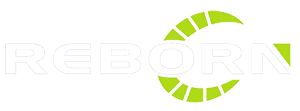-

Overview of Antistatic Agents
Generation of electrostatic charge The ability of a solid to carry a charge depends on surface conditions, dielectric constant, surface resistivity, and the relative humidity of the surrounding environment. Its ability to carry a charge is inversely proportional to its dielectric constant and rel...Read more -

Brief Introduction to UV Absorbers and Their Standards
I. Terms and Definitions Sunlight contains a large amount of ultraviolet (UV) light, with wavelengths of approximately 290-460 nm, which is harmful to colored objects. This harmful UV light causes color molecules to decompose and fade through a chemical redox reaction. Using UV absorbers can eff...Read more -

The material’s ” close protection ” —UV531
The material's " close protection " ---UV531 Ultraviolet (UV) radiation—this invisible "light assassin"—constantly threatens the lifespan and stability of various materials. As an "optical shield" against UV radiation, UV absorbers have become indispensable guardi...Read more -

How to select a suitable nucleating agent for PP?
Polypropylene is a widely used polymer employed in diverse applications due to its excellent combination of properties. Its properties, such as physical, mechanical and optical can further be enhanced with suitable use of nucleating agents and clarifying agents. These additives assist in...Read more -

Overview of Coating Additives
I. Types and Functions of Additives 1. Types of adjuvants (1) Classification by function of adjuvants ① Additives that improve the processing performance of coatings, including wetting agents, dispersants, defoamers, and anti-skinning agents. ② Additives that improve the storage and transportati...Read more -

How to choose the right plastic additives
Different types of additives are often added during the processing of plastics to meet the different processing and application requirements of the materials, and the selection of additives is crucial in the design of plastic modification formulations. I. Definition of plastic additives Plastic...Read more -

Cost Reduction and Performance Enhancement of Silica in Coatings
The application of silica in coatings mainly involves improving adhesion, weather resistance, anti-settling properties, and enhancing thixotropy. It is suitable for architectural coatings, water-based coatings, and acrylic resin paints. ...Read more -

Top Optical Brightener Manufactures
With the increasing demand for optical brighteners(fluorescent whitening agents), in order to facilitate the finding of suitable suppliers, share some top manufacturers of optical brighteners. Optical brighteners (fluoresc...Read more -

Why Do We Need Copper Deactivators?
Copper inhibitor or copper deactivator is a functional additive used in polymer materials such as plastics and rubber. Its main function is to inhibit the aging catalytic effect of copper or copper ions on materials, prevent material degradation, discoloration, or mechanical property degradation...Read more -

Sunscreen Science: The Essential Shield Against UV Rays
Regions near the equator or at high altitudes have strong ultraviolet radiation. Long term exposure to ultraviolet rays can lead to problems such as sunburn and skin aging, so sun protection is very important. The current sunscreen is mainly achieved through the mechanism of physical coverage or ...Read more -
Overview of Coating Additives
Definition and meaning Coating additives are ingredients added to coatings in addition to the main film-forming substances, pigments, fillers, and solvents. They are substances that can significantly improve a certain specific property of the coating or coating film. They are used in small amount...Read more -

Anti-aging Solution of Polyamide (Nylon, PA)
Nylon(polyamide, PA) is an engineering plastic with excellent mechanical and processing properties, among which PA6 and PA66 are common polyamide varieties. However, it has limitations in high temperature resistance, poor color stability, and is prone to moisture absorption and hydrolysis. Takin...Read more

